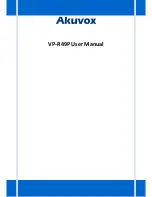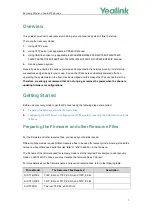
Copyright © 2000 Tunstall Group Ltd.
Lifeline 4000 Advanced User Guide (B)
13
r
e
t
e
m
a
r
a
P
r
e
b
m
u
N
e
n
o
h
p
e
l
e
T
0
1
5
5
2
6
6
7
7
9
1
0
1
1
0
0
8
2
6
2
5
6
1
0
7
3
8
7
7
4
6
4
3
6
1
0
#
8
3
8
7
2
4
6
4
3
6
1
0
9
3
2
2
7
4
6
4
3
6
1
0
0
1
1
1
1
7
4
6
4
3
6
1
0
9
3
6
4
9
3
4
6
4
3
6
1
0
0
4
2
2
8
9
4
6
4
3
6
1
0
1
4
2
4
Entering the alarm telephone numbers to call
The Lifeline 4000 has space for ten different telephone
numbers to call if an alarm is raised. Each number can be
the telephone number of a control centre, or the
telephone number of an individual (a personal recipient).
If Lifeline calls a control centre then it will
communicate with the computers at the control centre
using a series of electronic tones. If Lifeline calls an
individual it will announce either the unique ID (the
equipment identification number), or it will play the
message that has been recorded into it. For more
information on recording messages for personal recipients
see the main Lifeline 4000 User Guide. However, Lifeline
needs to know whether it is calling a personal recipient
(an individual) or a control centre, so that it knows
whether to play a message or communicate using
electronic tones.
Lifeline assumes that its first two telephone numbers
are control centre numbers. It assumes that the latter eight numbers are personal recipient telephone
numbers. In other words, Lifeline assumes that the number in parameter
0
is the number of a
control centre. Lifeline also assumes that the number in parameter
1
is the number of a control
centre. If it calls either of these telephone numbers it will attempt to communicate using electronic
tones.
Lifeline assumes that the numbers in parameters
7, 8, 9, 10, 39, 40, 41, 42
are all telephone
numbers for personal recipients. If you look at the table of parameters and telephone numbers
you can see that these are the parameters for the latter eight telephone numbers.
Changing Lifeline’s assumption.
Given that Lifeline assumes that the first two telephone numbers
are control centres, and the latter eight are the numbers of personal recipients, what do you do if
you want to enter a third control centre number? The answer
is that you put a # character before the number, by pressing
the # key. If you look at the table you can see that the
telephone number for parameter
7
has a # character in front
of it. Likewise, if you put a # character in front of either of the
first two telephone numbers (parameters
0
and
1
) Lifeline will
treat these first two numbers as personal recipients, instead
of treating them as control centres.
How are parameters numbered?
You might wonder why these
parameters have such different numbers. Why not number them
1 to 10? The answer is that parameters are numbered, where
possible, in the same way as older pieces of equipment. This
makes it easier for control centres with old control centre
software to program Lifeline 4000. As long as you know the
correct parameter number you do not need to pay any attention
to
how
they are numbered.
Summary of Contents for Lifeline 4000
Page 4: ...4 Lifeline 4000 Advanced User Guide B Copyright 2000 Tunstall Group Ltd...
Page 24: ...24 Lifeline 4000 Advanced User Guide B Copyright 2000 Tunstall Group Ltd...
Page 72: ...72 Lifeline 4000 Advanced User Guide B Copyright 2000 Tunstall Group Ltd...
Page 74: ...74 Lifeline 4000 Advanced User Guide B Copyright 2000 Tunstall Group Ltd...
Page 79: ...Copyright 2000 Tunstall Group Ltd Lifeline 4000 Advanced User Guide B 79...














































